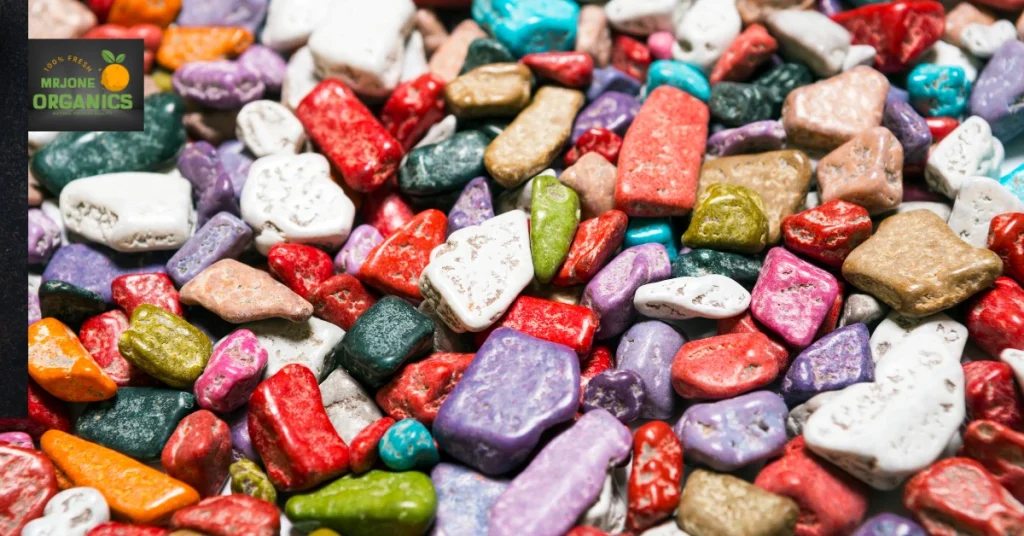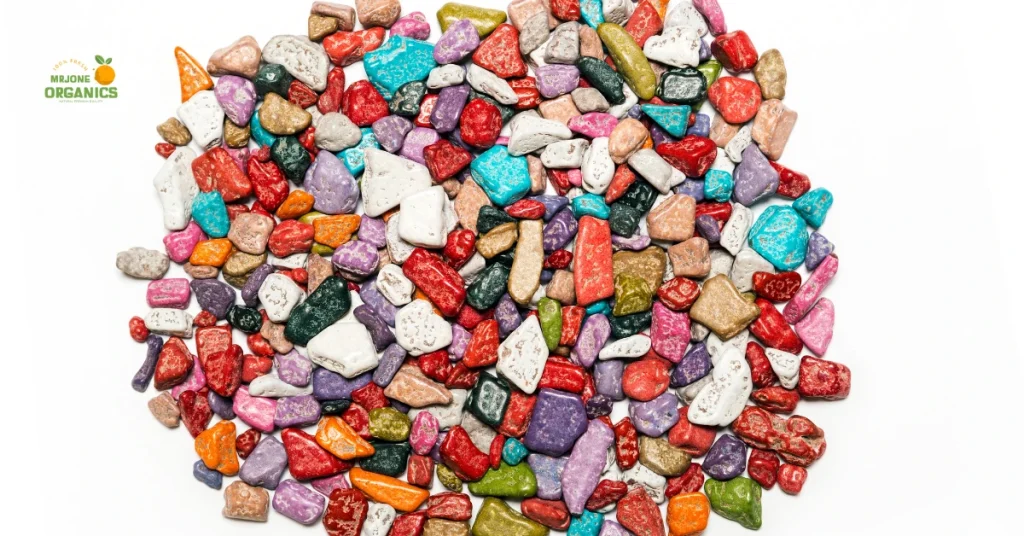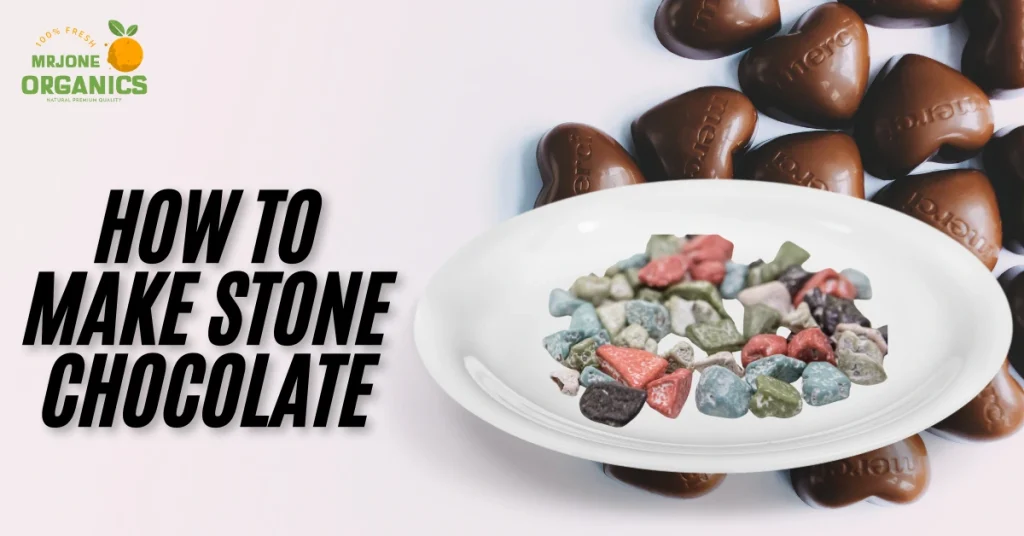What is Stone Chocolate?
Stone chocolate is an artistic confection designed to resemble smooth river pebbles or polished gemstones. It combines culinary craftsmanship with visual artistry, transforming ordinary chocolate into edible sculptures.
Origins and Popularity
The concept emerged from artisan chocolatiers seeking to mimic nature’s beauty. Over time, it has become a favorite in boutique dessert shops and among home bakers aiming to surprise guests with lifelike sweets specially in Pakistan.

Essential Ingredients Needed To Make Stone Chocolate
Chocolate Base Varieties
A high-quality chocolate base—dark, milk, or white—is essential. Dark chocolate provides depth, milk adds creaminess, and white acts as a neutral canvas for vibrant colors.
Food Coloring and Edible Coatings
Oil-based food colors integrate seamlessly into melted chocolate, while edible powders and sprays create the natural stone-like illusion.
Gloss Agents for Shine
To mimic the polished look of pebbles, confectioners often use edible shellac or cocoa butter glaze, giving stones their glimmer.
Tools and Equipment Required To Make Stone Chocolate
Melting Tools
Double boilers or microwave-safe bowls ensure chocolate melts evenly without scorching.
Molds and Shaping Instruments
Silicone pebble molds provide uniformity, while hands can sculpt irregular shapes for added realism.
Storage Containers
Airtight jars or tins preserve freshness and enhance presentation.
Preparing the Chocolate Base
Choosing the Right Cocoa Content
Chocolates with 55–70% cocoa strike the perfect balance between rich taste and pliability, making them ideal for stone shaping.
Proper Tempering Techniques
Tempering—heating, cooling, and reheating chocolate—ensures a smooth finish, snap, and resistance to melting in warm hands.
Crafting the Stone Effect
Coloring Methods
Blending multiple food colors creates veins and gradients, imitating marble and granite patterns.
Layering and Texturing for Realism
A thin layer of color followed by random speckles or brush strokes makes each piece uniquely stone-like.
Shaping into Pebble-Like Forms
Mold Techniques
Pouring chocolate into stone-shaped molds yields uniform results, ideal for beginners.
Hand-Rolling Methods
Rolling cooled chocolate by hand produces irregular forms, closely resembling natural river stones.
Achieving a Natural Stone Finish
Using Edible Dusts and Sprays
Dusting chocolates with silver, copper, or earthy tones elevates realism, while sprays lock in the effect.
Polishing for a Glossy Exterior
Buffing with a soft, clean cloth after coating provides the final gemstone-like sheen.
Creative Variations
Marbled Stone Chocolates
By swirling two or more chocolate colors, marbled stones emerge, reminiscent of precious agates.
Metallic-Toned Pebbles
Gold or bronze dust transforms chocolates into luxury gems, perfect for upscale gifting.
Flavor-Infused Stones
Infusions of mint, orange, or hazelnut give these stones a delightful twist beyond their striking appearance.

Storage and Shelf Life
Optimal Conditions
Store in a cool, dry place at 15–18°C to maintain texture and shine.
Avoiding Bloom and Discoloration
Keeping stones away from humidity and rapid temperature shifts prevents sugar or fat bloom, preserving their flawless appearance.
Serving and Presentation Ideas
Decorative Dessert Platters
Scatter stone chocolates across cakes or mousse desserts to astonish diners with their deceptive appearance.
Gift Packaging Concepts
Glass jars or kraft boxes filled with assorted pebble chocolates create elegant and surprising gifts.
Common Mistakes and Troubleshooting
Overheating Chocolate
Excessive heat causes chocolate to seize, resulting in grainy textures instead of smooth stones.
Uneven Coloring
Failing to blend food coloring properly can create streaks, diminishing realism.
Cracking or Melting Stones
Improper tempering or poor storage leads to fragile or sticky stones.
Conclusion: The Art of Edible Stones
Stone chocolates blur the line between culinary craft and artistic illusion. They transform simple cocoa into works of edible art, captivating the eyes before delighting the taste buds. With careful preparation, creativity, and precision, anyone can master the craft of making chocolates that look like polished treasures from nature’s hand.


